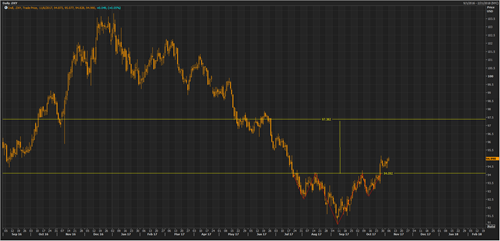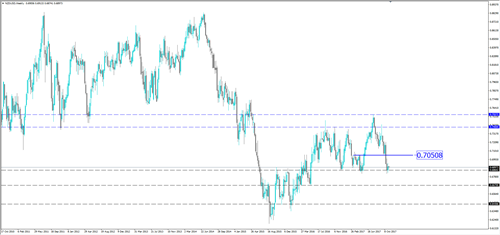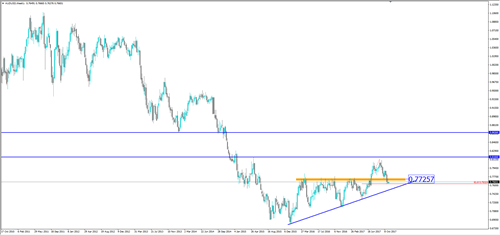The nonfarm sector in the United States showed some positive results last week and added 261,000 jobs in October. Although it was below expectations, employment levels returned to higher than 200K levels, this was positive, while last month's reading was revised upwards to 18K jobs after the previous reading which printed -33K. Unemployment rates continued to fall to a record low of 4.1%.
The dollar was limited on Friday, with wage rates slowing to 0.0% in October after rising by 0.5% the previous month, and on an annualized basis slowed to 2.4% after rising by 2.8% in September.
The data continues to support raise interest rates when the US Fed meets next month, with expectations for a December interest rate hike rises to 96.7% according to FedWatch.
The dollar index has since traded between the levels of 94-95 after breaking the neckline of the inverted head and shoulders pattern on the daily chart to target the 97.38 levels after crossing 95 levels.
Inverted head & shoulders on DXY :

Also, what helped the limited movement of the US dollar Trump Declaration of the next president of the US Federal Jerome Powell, a member of the current FOMC, which was not at the top of the list set by the US President to succeed Janet Yellen, and likely will continue the policy of the Federal as it is and surprises are not expected.
This week, the economic calendar won't see a lot of important data such as last week, which saw a lot of momentum by the meeting of a large number of central banks, most notably the Bank of England, which raised rates for the first time in a decade as a result of continuing high inflation figures.
Attention will be directed to the Reserve Bank of Australia and Reserve Bank of New Zealand this week and are widely expected to keep monetary policy unchanged for some time.
The first decision by Governor of the New Zealand Provisional Reserve Bank Grant Spencer at the previous meeting in September was that monetary policy to remain with no change for a period of time while maintaining interest rates at 1.75%. Despite the change in the central bank's governor, the same outlook remains, or Spencer may be less optimistic On prospects for economic growth. The bank had predicted no change in interest rates until late 2019, and that view was not changed in the latest statement.
Inflation figures for the third quarter of this year rose by 1.9% on yearly basis from 1.7% and 0.5% QoQ from 0.0%. We do not think these figures to translate into any move from the RBNZ, where inflation stabilizes near mid range of target.

Technically, the weekly chart is trading close to a strong support level (resistance turned to support), and we may see the NZDUSD regaining its uptrend again with exceeding the 0.7050 level to re-target the 0.74/0.75 levels, - which RBNZ does not want that – While with breaking current support level, prices would be pushed down towards 0.6670 and then 0.6436.

It is not very different in Australia,, with most of the views going to expect that the Reserve Bank of Australia to keep on its easing policy for a while and thus keep interest rates at 1.50%. The Bank continues its neutral approach, noting that low interest rates support economic growth. Recently, the Australian Reserve warned against the strength of the Australian dollar, which would negatively affect economic activity as well as inflation.
On the weekly chart for the AUDUSD, we see the pair move in a clear bullish trend and currently trading at 0.7632, which represents 61.8% Fibonacci correction, just below the strong support at 0.7725, and with stability above these levels we might see the pair Up to 0.80 again or there may be some declines to retest the rising trend line.
